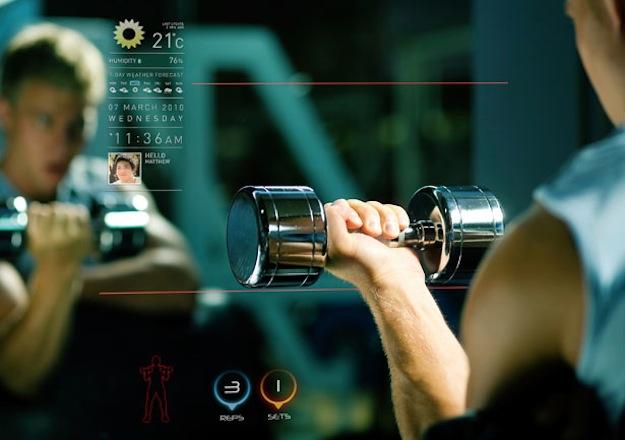
Mirrors are boring. You look in and see different versions of yourself every day, and the more time you spend in the bathroom the more you miss out on what’s happening in the world as you get dressed. That’s why we’re extremely excited for this Cybertecture Mirror that is beginning to ship in Hong Kong, bringing a magic mirror inside anyone’s home.
The Cybertecture Mirror is designed by Hong Kong-based James Law which features a digital display that not only serves as a reflective medium, but you can add programmable applications to the mirror. For example, you can leave the weather widget on while you get dressed so you know what temperature to expect, or a news widget to catch up on today’s headlines as you brush your teeth. Several other features include a built-in video player that runs YouTube clips and television programming, and an exercise app that brings up workout stats to help you keep your form in check and monitor your caloric burn.

The mirror is also capable of logging onto the web thanks to its Wi-Fi and LAN capabilities, and is decked out with touchscreen function, stereo speakers, fog-resistant glass, and a waterproof layer so it won’t electrocute itself if you place it above your sink. The entire mirror is 37 inches with a 32-inch LCD screen built-in. The data logged on the apps in the Cybertecture Mirror can also be accessed through a web app should you want another place to keep track of your exercising stats. An iPhone app is also in the works.
The product is extremely cool, and while it looks super futuristic, it seems pretty reasonable to exist on the market today. Think about it: The mirror is pretty much an oversized tablet or a normal size Smart TV with a reflective screen. Add a little Kinect-like feature to locate the user in the screen and you’ve got the Cybertecture Mirror. The only thing it doesn’t have, however, is a virtual assistant Siri style, which means you won’t be able to talk, ask, or command your mirror to help you look better. Which is fine, because that is a bit narcissistic.
Still, adding the Cybertecture Mirror in your house isn’t going to come cheap, naturally. Depending on the level of specs, this mirror can cost you up to 60,000 HKD, or approximately $7,726 USD. Of course, buying more mirrors will allow you to enjoy economy of scale. And if you have that kind of money, great, because the makers aren’t anticipating this to be limited to just the bathroom. In product photos, they want to see the Cybertecture placed in every room of your house, from the living room to the kitchen. The only thing we’re left to wonder is how much power this thing drains.


